Introduction
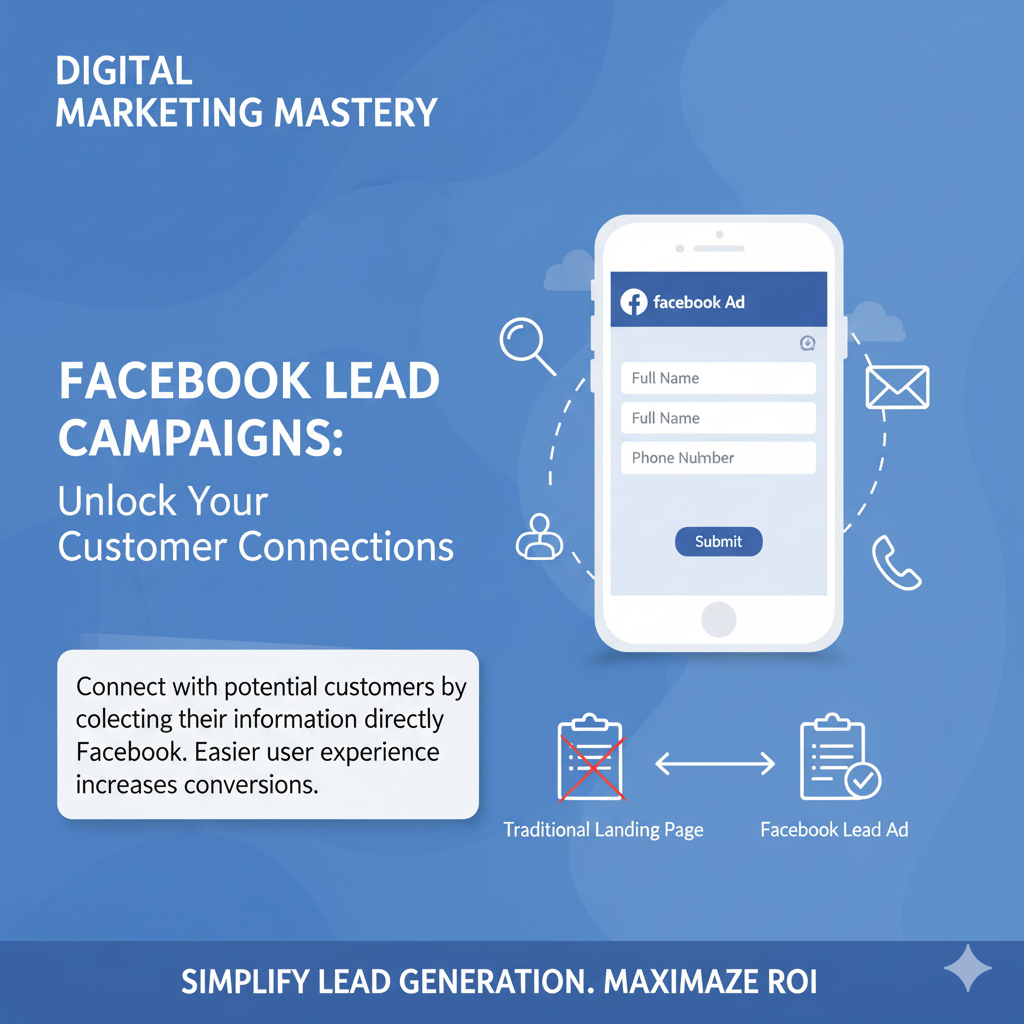
In digital marketing, leads are the foundation of every successful business. Facebook’s Lead Campaign helps brands connect with potential customers by collecting their information — such as name, email, or phone number — directly through Facebook or Instagram.
Unlike traditional landing pages, Facebook Lead Ads make it easier for users to share details without leaving the platform. This smooth, user-friendly experience increases the chances of conversion while saving time and cost for advertisers.
What Is a Facebook Lead Campaign?
A Facebook Lead Campaign is an ad objective designed to collect customer data within Meta’s ecosystem. When this objective is selected, Facebook optimizes ad delivery to reach users most likely to fill out your form or start a conversation with your business.
These campaigns are perfect for generating inquiries, sign-ups, and bookings. The forms are pre-filled with user data, making submission quick and convenient — ideal for businesses that want fast, high-quality leads.
In short:
“You’re not paying for clicks — you’re paying for real customer interest.”
Types of Facebook Lead Campaigns
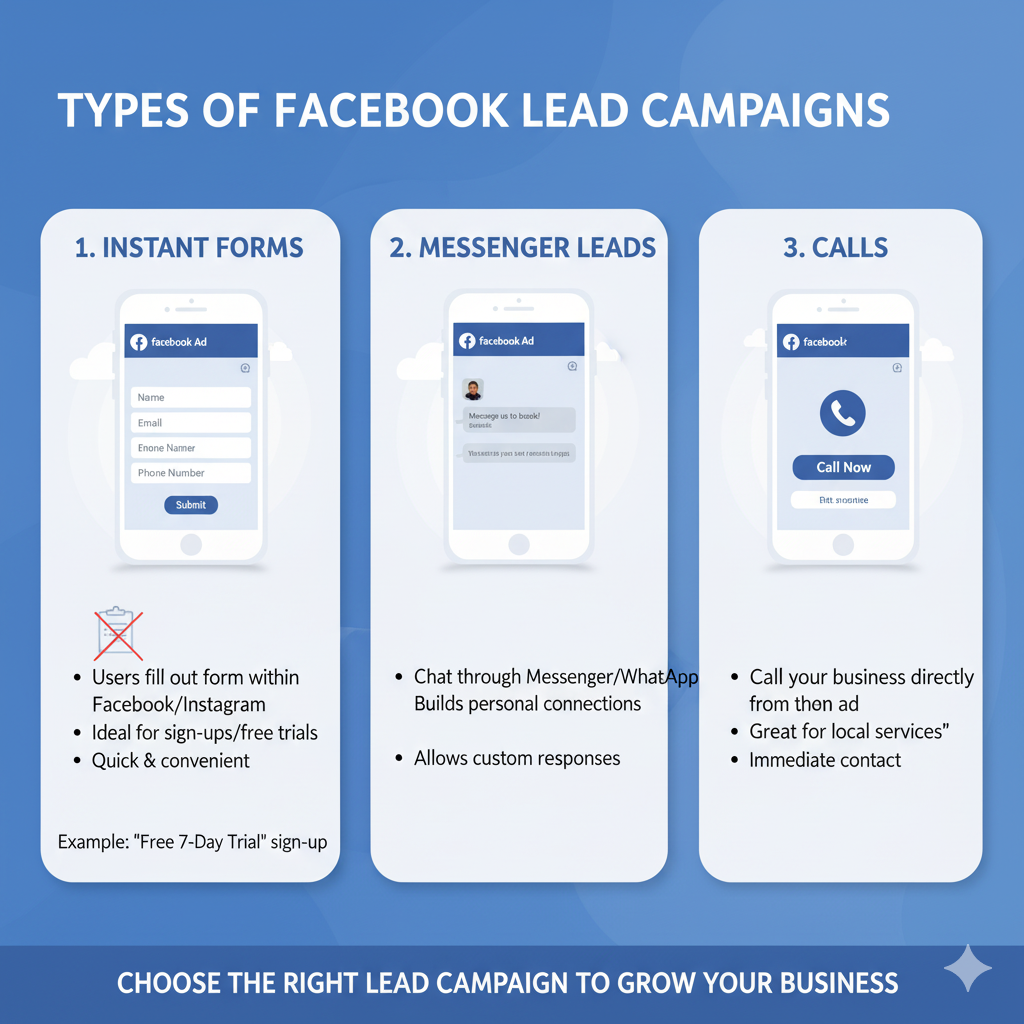
1. Instant Forms
- Users fill out a pre-filled form within Facebook or Instagram.
- Ideal for sign-ups, free trials, or service inquiries.
- Quick and convenient for both businesses and customers.
Example: A fitness trainer promoting a “Free 7-Day Trial” form where users sign up instantly.
2. Messenger Leads
- Encourages users to chat through Messenger or WhatsApp.
- Builds personal connections and allows custom responses.
Example: A restaurant ad saying, “Message us to book your table or ask for today’s specials.”
3. Calls
- Lets users call your business directly from the ad.
- Great for local services that depend on immediate contact.
Example: A salon ad inviting users to “Call now for an appointment.”
Why Facebook Lead Campaigns Matter
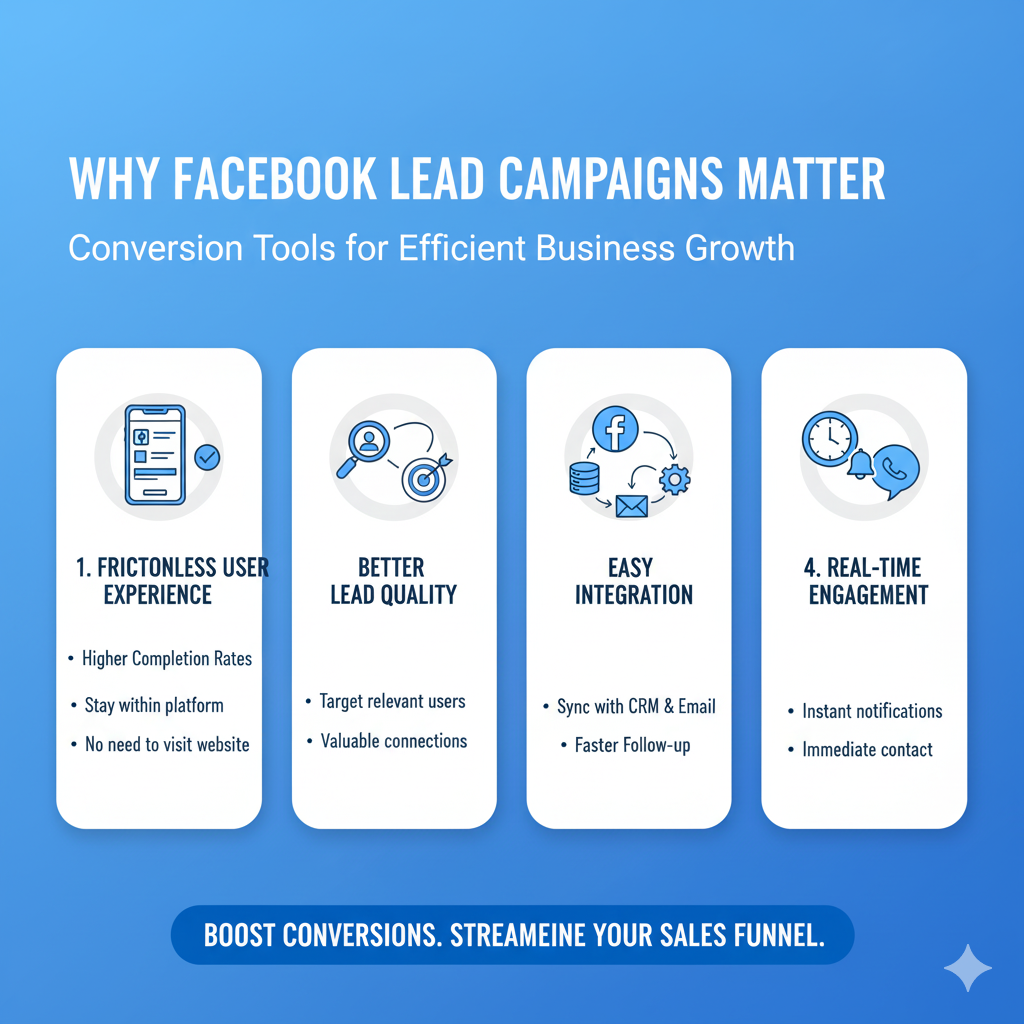
Facebook lead ads are more than just forms — they’re conversion tools that help businesses grow efficiently.
1. Frictionless User Experience
Users stay within the platform, so there’s no need to visit another website. This convenience leads to higher form completion rates.
2. Better Lead Quality
Facebook targets users most likely to engage or take action, ensuring that your leads are relevant and valuable.
3. Easy Integration
Collected leads can be directly synced with your CRM, email list, or automation tools for faster follow-up.
4. Real-Time Engagement
Instant notifications allow you to contact leads immediately, increasing conversion chances.
How to Create a Facebook Lead Campaign
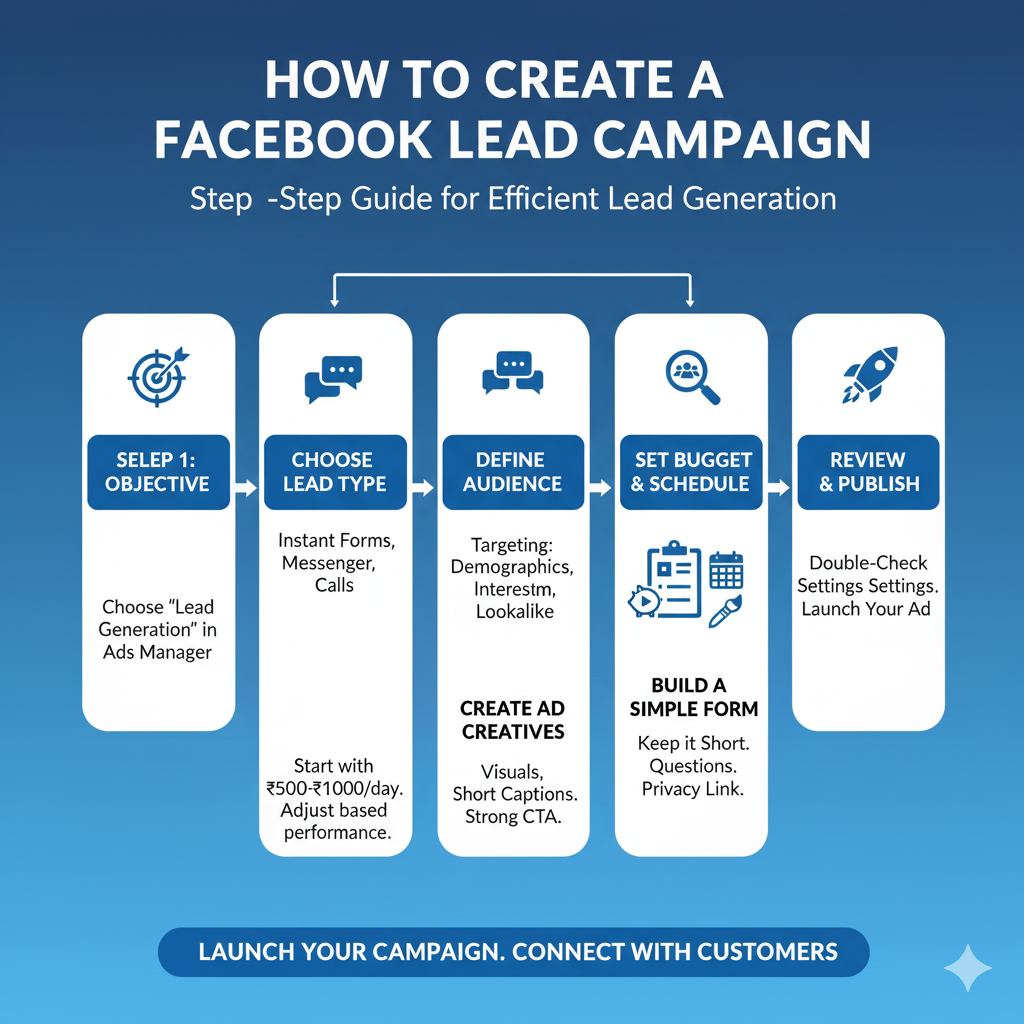
Step 1: Select Campaign Objective
Go to Meta Ads Manager and choose Lead Generation as your campaign objective.
Step 2: Choose Lead Type
Select whether you want to use Instant Forms, Messenger, or Calls based on your business needs.
Step 3: Define Audience
Use Facebook’s targeting tools:
- Core Audience – Based on age, location, interests, and behavior.
- Custom Audience – Retarget users who interacted with your content.
- Lookalike Audience – Reach new people similar to your best customers.
Step 4: Set Budget and Schedule
Start with a small daily budget (₹500–₹1000) and increase as you identify what works best.
Step 5: Create Engaging Ad Creatives
- Use clear visuals or videos.
- Keep captions short and benefit-driven.
- Add a strong Call to Action (e.g., “Sign Up,” “Get Quote,” or “Learn More”).
Step 6: Build a Simple Form
- Keep the form short and ask only relevant questions.
- Add a short description about your offer.
- Include your privacy policy link.
Step 7: Review and Publish
Double-check targeting, creatives, and form settings before publishing your ad.
Best Practices for Better Results
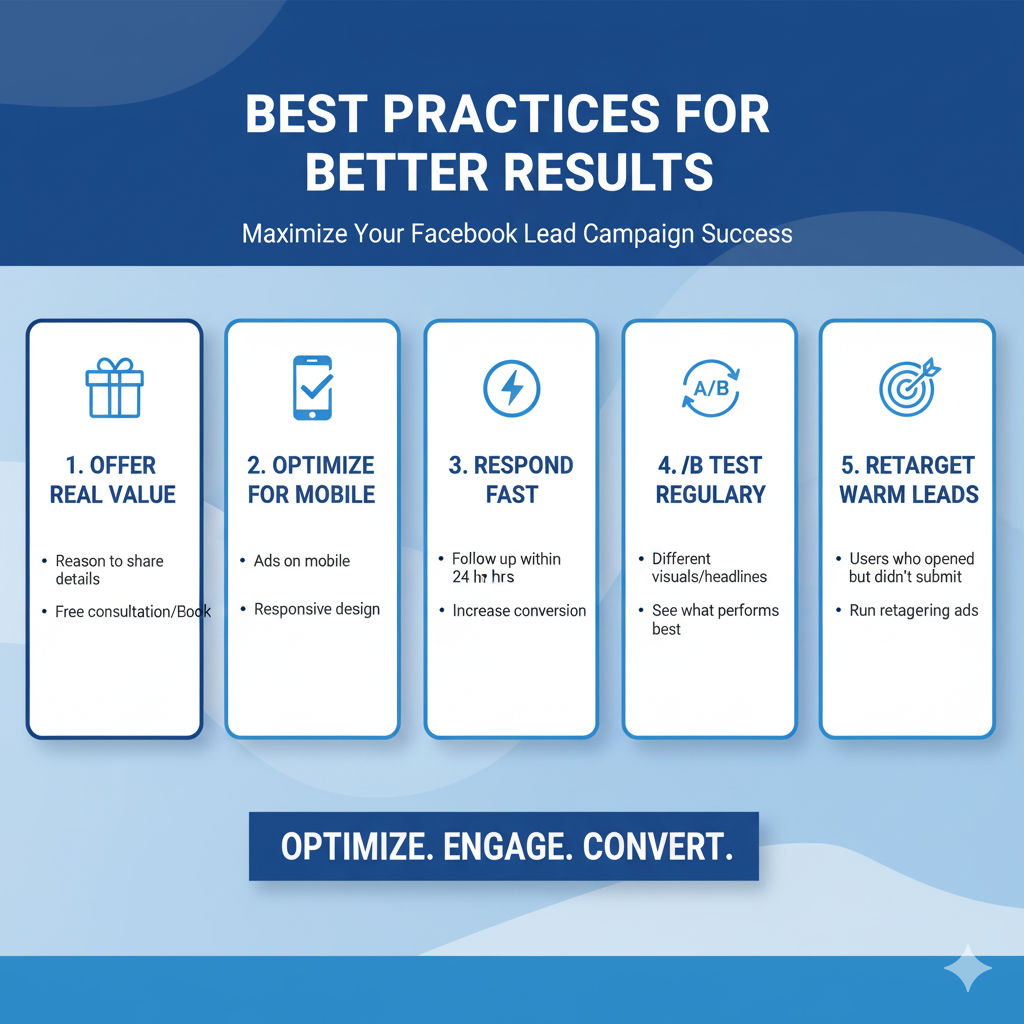
- Offer Real Value: Give users a reason to share their details (like a free consultation or eBook).
- Optimize for Mobile: Most Facebook users access ads on mobile — design accordingly.
- Respond Fast: Follow up with leads within 24 hours for better conversion.
- A/B Test Regularly: Test different visuals, headlines, and offers to see what performs best.
- Retarget Warm Leads: Run retargeting ads for users who opened the form but didn’t submit.
Measuring Success
Keep an eye on these important performance indicators:
- Cost Per Lead (CPL) – Total Spend ÷ Number of Leads.
- Lead Quality – Number of leads that actually convert.
- Form Completion Rate – % of users who opened and submitted the form.
- Follow-Up Conversions – How many leads turned into customers.
A low CPL with a high conversion rate means your campaign is delivering strong results.
Conclusion
Facebook Lead Campaigns are one of the most effective ways to generate real business results in today’s digital landscape. By combining smart targeting, clear creatives, and quick follow-ups, businesses can convert simple interactions into valuable customer relationships.
These campaigns bridge the gap between awareness and conversion — helping brands build trust, collect genuine leads, and increase sales effortlessly.